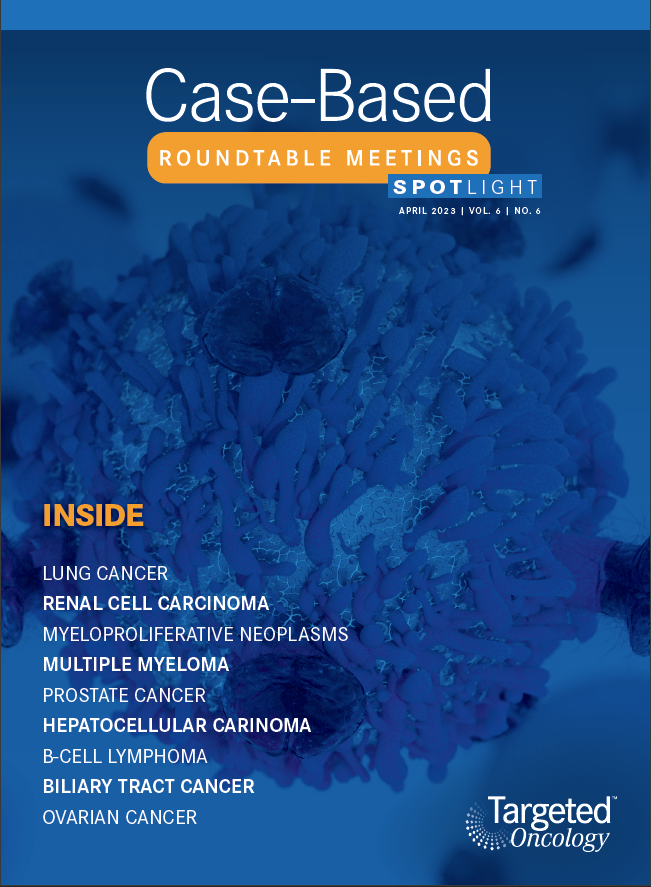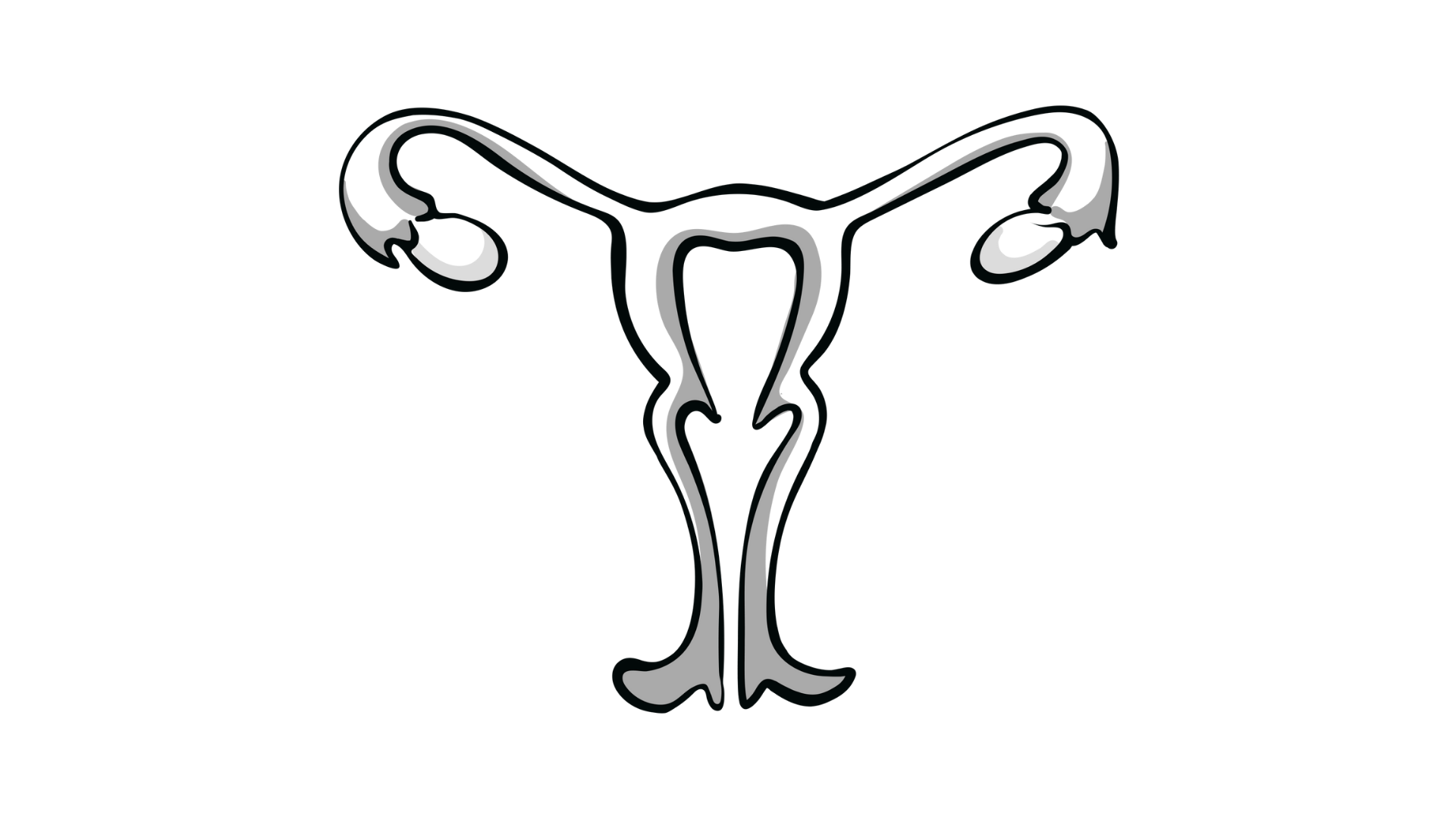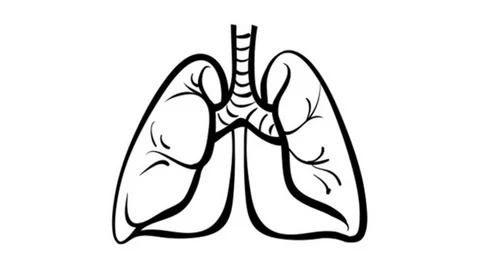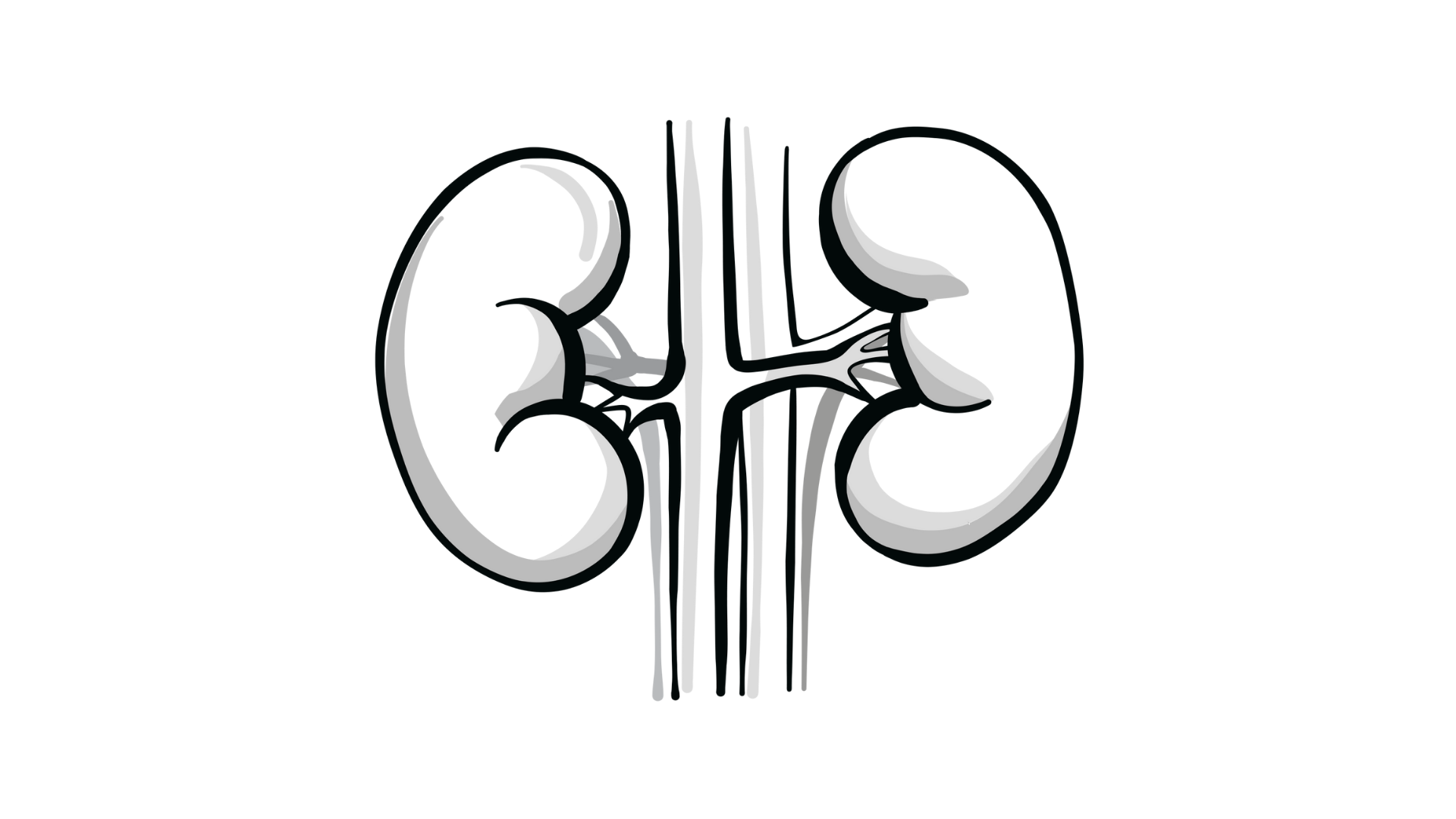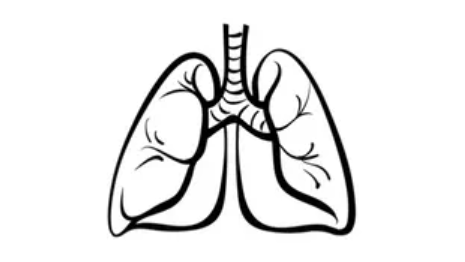Roundtable Discussion: Bodor Reviews Benefits, Challenges of Immunotherapy for Squamous NSCLC
During a Targeted Oncology™ Case-Based Roundtable™ event, J. Nicholas Bodor, MD, PhD, MPH, discussed the CheckMate 9LA regimen of nivolumab and ipilimumab plus chemotherapy for patients with advanced squamous non–small cell lung cancer.
J. Nicholas Bodor, MD, PhD, MPH
Assistant Professor, Department of Hematology/Oncology
Thoracic Oncology Program
Fox Chase Cancer Center
Philadelphia, PA

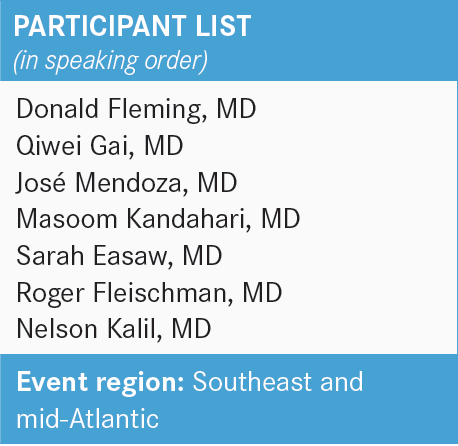
CASE SUMMARY
A woman aged 62 years presented to the emergency department with complaints of voice changes and cough. She had a recent weight loss of 11 lb. A CT scan of the head and neck area discovered a 1-cm nodule in the left upper lobe, and MRI was negative for brain metastases. She had a history of hypertension, hyperlipidemia, and chronic obstructive pulmonary disease (managed on inhalers), as well as a smoking history of 10 to 15 pack-years, ended 25 years ago. Her mother died from lung cancer aged 65 years. On physical examination, she weighed 125 lb and had an ECOG performance status of 1.
Final pathology was consistent with squamous cell carcinoma: metastatic stage IV. PD-L1 expression by immunohistochemistry was 0%. Next-generation sequencing showed no actionable mutations. Treatment options were reviewed with the patient and family. The patient was initiated on nivolumab (Opdivo) 360 mg intravenously every 3 weeks, plus ipilimumab (Yervoy) 1 mg/kg IV every 6 weeks, and 2 cycles of chemotherapy every 3 weeks.
DISCUSSION QUESTION
- What clinical and disease characteristics influence your decision to use nivolumab, ipilimumab, and 2 cycles of chemotherapy in non–small cell lung cancer (NSCLC)?
BODOR: Among those who have used this particular regimen, what factors did you consider when choosing it?
FLEMING: I have used it, and I considered the patient’s PD-L1–negative status. In the CheckMate 9LA trial [NCT03215706], in that particular group, there still seemed to be significant benefit despite the lack of PD-L1 expression, and it involved only 2 cycles of chemotherapy [From the Data1]. It’s not that big of a risk in that situation, so that’s why I’ve used it.

BODOR: I take the same sort of approach. We’re in this fortunate situation where we have a number of different regimens that are FDA approved that we can select from in the first line for our patients. Some regimens have their particular niche, and for those patients with squamous histology in PD-L1–negative disease, I think a lot about this particular regimen.
I know initially many of us were thinking it is a lot of different agents to be giving to a patient, but all 4 agents—the ipilimumab, nivolumab, and [2 chemotherapy drugs]—are given for just that first cycle. Once you get to the second cycle, the ipilimumab is not given at that point, and it’s really a chemotherapy/single-agent IO [immunotherapy] regimen for the second cycle. After that, the chemotherapy drops off.
[Although] I had some reservations initially, similar to many of us out in practice, about how well patients can tolerate a 4-drug regimen. I’ve found that many of my patients—and like I said, I tend to reserve this more for patients who are PD-L1 negative, and in particular those who are PD-L1 negative with squamous histology—generally seem to tolerate this regimen fairly well. And once again, all 4 drugs are given just in the first cycle.
FLEMING: What chemotherapy do you typically like to give with it?
BODOR: For patients with adenocarcinoma, I like to give pemetrexed [Alimta]. The question that then frequently comes up is, “Does the pemetrexed continue as maintenance?” I tend to follow what the trial dictates; just giving the pemetrexed with the first 2 cycles of treatment. It was just in the control arm where pemetrexed was potentially continued as maintenance. I typically give carboplatin and pemetrexed for those patients with adenocarcinoma or nonsquamous disease. For patients with squamous disease, including those with a mixed-histology adenosquamous disease, I will give typically carboplatin with a paclitaxel [Taxol] agent.
GAI: Some data show that dual immunotherapy may be more beneficial in high-risk disease, such as in STK11 or KEAP1 mutations.2 Does that make sense here?
BODOR: That’s a very good question. I think it’s a little too early to say. But certainly, with some of the more recently updated data from CheckMate 9LA, and from the ipilimumab/ nivolumab data [from CheckMate 227 (NCT02477826)], with…STK11 or KEAP1 [mutations], with the IO/IO chemotherapy regimen, there are at least trends suggesting that they’re still doing fairly well, despite having some of these additional comutations that we typically associate with immunotherapy resistance.1 I think at this point it’s probably a little too early to say. The trends are favorable. I think ultimately those subgroups are small, and it probably doesn’t factor too much into my decision-making at this point. Certainly, I think things like STK11 or KEAP1 [mutations] are potentially bad actors; however, I don’t use it so much as far as dictating what I choose for treatment. I still use things like PD-L1 and the other major oncogene mutations that we typically look for, as far as whether or not a particular tumor might be responsive to immunotherapy.
MENDOZA: You mentioned that you treat adenosquamous histology as a squamous cell carcinoma, meaning with a carboplatin backbone with a taxane. I think that can be used for either pure adenocarcinomas or squamous cell carcinomas. I thought adenosquamous histology was treated more like a variant of adenocarcinoma. I don’t have much experience but that’s what I heard from somebody who had a high volume [of patients with lung cancer in their] practice.
BODOR: I think that varies between practices. Just within my own practice, and for some of my colleagues here at Fox Chase Cancer Center, generally if we see some component of a squamous cell in the pathology, we tend to favor using a taxane over pemetrexed. You raise a good point. And others may do it slightly differently. In fact, even if you look at some of the phase 3 trials that include pemetrexed as part of a backbone, combined with immunotherapy and whatever else, you can always see within their breakdown of patient characteristics that there is frequently a small percentage of patients with adenosquamous histology who received pemetrexed.
MENDOZA: What about in pure squamous histology, if we use carboplatin and gemcitabine [Gemzar], because sometimes paclitaxel is not tolerated?
BODOR: That would be reasonable as well. Of course, the median age of diagnosis for all of our patients is 70 years… so half of our patients are older than that, potentially significantly older than that. At least in my own practice, if I’m worried about a patient being able to tolerate a taxane, I might think about using nab-paclitaxel [Abraxane], especially if there’s any preexisting neuropathy or I’m worried about worsening myelosuppression and decreased counts.
I also like the fact that with nab-paclitaxel, the dose is given weekly, so I feel like I have more control there. I could potentially bail out on the day 15 dose if, for any reason, the patient doesn’t seem to be tolerating it very well. But as far as the platinum backbone, I agree, there are several different options, and a lot of times it’s [based on] the patient [who is] sitting in front of us. I think we all recognize that the clinical trial patient is frequently very different from the type of patient we may see in our real-world practice, and we have to make the appropriate adjustments.
DISCUSSION QUESTIONS
- How long do you continue immunotherapy?
- How do you manage immunotherapy dosing and discontinuation when considering immune-mediated adverse events (AEs)?
KANDAHARI: I had a female patient who presented with brain metastases, and eventually she was [given a diagnosis of] adenocarcinoma of the lung. Her PD-L1 status was positive, at 90%. I gave her single-agent pembrolizumab [Keytruda] and then she got stereotactic radiosurgery on the brain. She did very well and responded with an almost complete response. Then I gave her pembrolizumab for 2 years because that’s what they did in the [KEYNOTE-024 study; NCT02142738]. After that I didn’t know if I could continue, or whether the insurance would cover it, so I stopped it after 2 years. Then 8 months later she recurred. I put her back on pembrolizumab, but I just did another PET scan and it looks like she is not responding now, so I have to put her on chemotherapy. Can you continue pembrolizumab after 2 years?
BODOR: I would say yes, you can, but it’s not a clear answer. As you stated, in most of the clinical trials the immune checkpoint inhibitor was stopped after 2 years. We now have long enough follow-up data, [for example from] KEYNOTE-001 [NCT01295827], which was one of the original phase 1 trials looking at pembrolizumab in a number of different solid tumor types, including NSCLC.3 What we know is, among those with PD-L1–high status, like in your patient’s case, 29% to 30% of them are alive at greater than 5 years.
Other trials involving pembrolizumab include KEYNOTE-024, which was also in patients with PD-L1 expression greater than 50%.4 It was a similar story: Patients stopped pembrolizumab after 2 years, and about 30% of them are alive at 5 years plus. Many of these patients, even though they stopped the immune checkpoint inhibitor, continue to have a durable response, which is truly the amazing thing about immunotherapy that I think all of us have experienced with many of our patients. Then of course, there are some patients [who] could recur after they stop.
At this point, we don’t necessarily know which patients are the ones who may recur and those who may continue to have those durable responses. We’re having these discussions; not that long ago, I don’t think we ever thought that we would be able to be in this position. But yes, you can continue beyond 2 years, and I myself have patients who have been on it beyond 2 years. I’ve inherited patients from other colleagues who have been on it for greater than 2 years.
Of course, I have some patients who were tired of coming in the infusion room…and said, “No, after 2 years, I will take my chances and I’ll just continue with close surveillance.” And I have other patients who say, “I can’t imagine not being able to continue the immunotherapy.” I know there are some concerns about reimbursement…but at least for my patients who have gone on beyond 2 years, I have not had any issues with it getting paid for. To answer your question, the answer is yes, one can continue it beyond 2 years. I know a lot of physicians who do continue their patients beyond 2 years, but frequently it’s a shared decision made between the provider and the patient.
EASAW: Like you said, this is a good problem to have, because we have [patients] with stage IV NSCLC with brain metastasis alive after 3 or 4 years. I have a similar situation, where a patient with high PD-L1 expression had received pembrolizumab, and when she was close to her 2-year mark she developed pneumonitis. She needed steroids and everything, so we stopped the pembrolizumab, and she’s been free of disease and the pneumonitis resolved. Now it’s 2 years later, which is almost 5 years from her diagnosis, and she’s having recurrent disease. Would we rechallenge her with immunotherapy at this point, because she had pneumonitis 2 years ago, or should we go to something else?
BODOR: Was her first bout of pneumonitis life-threatening?
EASAW: She was in the hospital, and it was grade 2 to 3. She wants to go back on the immunotherapy but I’m afraid to put her back on it.
BODOR: I don’t think we have a clear answer. The experience that you’ve had with this patient is not an unusual one. I have patients myself—and I know this is well documented in the literature—those who have more severe immune-mediated AEs may be the ones who have the most durable responses and long disease-free intervals.
Some are potentially even [essentially] cured after just getting a couple of doses of immunotherapy, [even though they] had a bad reaction, and don’t need any subsequent therapy. Unfortunately, in your patient’s case, the disease has recurred. I don’t have the clearest answer. Once again, this is a shared decision with the patient, to see if she’s willing to try this again. It sounds like she probably is.
She would have to understand that her risk of pneumonitis occurring again is probably high, but I think it is something you can consider because the potential benefit would also be high. Certainly, if there are any radiographic changes or any first inklings of alarming symptoms that suggest pneumonitis is recurring, I would be quick to bail and be very aggressive in treating it at that point. Unfortunately, she would [then] just have the option of chemotherapy.
FLEISCHMAN: I’ve had patients who had 3 documented responses, each time limited by toxicity. Each time we did it again, 6 months or 8 months or a year later, they had another response with the same toxicity but each time got a response that was quite significant. If she wants to do it, I wouldn’t hesitate.
KALIL: Do you have any data showing any correlation between pneumonitis and immunotherapy? Let’s say [with] some dose reduction to minimize the chance of pneumonitis, do you have any documentation showing that it would be possible, or safer, to consider this option? I know it’s not in the label. I know that [with] grade 3 toxicity you’re supposed to challenge again, but in the real world, is there any documentation about dose reduction and the risk of pneumonitis in patients with immunotherapy?
BODOR: I’m not aware of anything with respect to the dose reduction per se, as far as a decrease in risk for pneumonitis, or anything along those lines. What I do know is in giving double checkpoint inhibitors—ipilimumab/nivolumab with PD-L1 plus CTLA-4—I think there [are] a fair amount of data indicating that your risk for particular immune-mediated AEs is likely greater with dual immune checkpoint inhibition. In those particular cases, if I have a patient who experiences colitis or something else, but not so severe or life-threatening that I would consider rechallenging them, I would potentially consider giving the PD-1 inhibitor alone and dropping the CTLA-4. I know a number of other physicians are doing that in practice as well. As far as the actual dose reduction per se of the agent, I’m not familiar with data suggesting that that might be helpful.
KALIL: Thank you.
MENDOZA: It’s useful and reassuring to hear that other physicians actually rechallenge patients. I would assume that it’s probably dependent on the degree of toxicity and the organ involved. I have 2 patients who have been in remission but also have skin toxicity. One had significant generalized leukemoid skin toxicity but happened to be in remission, so we put that on hold and it’s been a number of years. Probably 3 or 4 years, and she actually has no evidence of disease, so that goes to what you just said.
The second patient had a shorter remission and had to be put on medication again. He had a skin reaction, a different type, but he also had biochemical hepatitis. That’s what actually scares the patient, because in trying to rechallenge him, I tell him that this is a possibility, but I see that possibility as a rechallenging situation. In pneumonitis I would probably have a little bit more pause, but we had to use other agents, like docetaxel [Taxotere] plus ramucirumab [Cyramza], for instance. But it’s still in the back of my mind. I haven’t been able to rechallenge yet, but it’s reassuring to hear other [individuals] doing that.
BODOR: Generally, within my own practice, in grade 3 or higher AEs I tend to be reluctant to try to rechallenge. If it’s grade 1, or grade 2, I would consider it, especially if I’m able to get things under control and have the immune-mediated toxicity resolve with steroids. If I end up having to use other biological agents, whether it’s infliximab [Remicade] or mycophenolate mofetil [CellCept], or if it’s a life-threatening toxicity, that’s when I have more reluctance as well.
DISCUSSION QUESTION
- In what situations would you avoid using immunotherapy?
MENDOZA: I know there are obviously at least 2 contraindications [for immunotherapy] and some of them are more fearful than others; thyroid is not a major issue, but multiple sclerosis and those things [would be]. But what about when it comes to autoimmune paraneoplastic syndromes, for instance?
I had a patient where it wasn’t clear whether they had myasthenia gravis or Lambert-Eaton myasthenic syndrome— in those cases, where you think there is some association or possibility of paraneoplastic syndrome, do you treat the underlying condition with immunotherapy, or do you have pause?
BODOR: Those are difficult instances. Certainly, if we’re assuming it’s not a paraneoplastic syndrome, and they have a certain kind of autoimmune condition coming into their lung cancer diagnosis that’s not associated [with their] lung cancer diagnosis, there are certain ones that give me a lot of pause and would probably be an absolute contraindication in some cases. For instance, for conditions like myasthenia gravis, I would think long and hard about [it]. Solid organ transplant—it would certainly be an absolute contraindication. [Conditions] like multiple sclerosis that are the more neurological type of autoimmune-mediated conditions are absolute contraindications to immunotherapy, in my particular book. Other kinds of milder rheumatological autoimmune conditions, I think less so.
The problem that we’re having is all the prior clinical trials have generally excluded patients with autoimmune conditions, so we have relatively little data on this. But I know for at least myself and a lot of my colleagues, and just talking to other physicians, I think we’re feeling a little bit bolder as far as treating patients with milder rheumatological conditions with immune checkpoint inhibitors and watching things very closely.
With respect to paraneoplastic syndrome, I think ultimately, we don’t know. I think it’s a case-by-case decision, just from my own personal experience. Frequently we may see some of these paraneoplastic syndromes, more so with small cell lung cancer. I had a recent patient with that as well, who had a similar type of paraneoplastic process. I did consult with one of our rheumatologists, who was helpful in showing that this was likely a paraneoplastic process rather than something that was a pre-existing autoimmune condition. I still treated them with atezolizumab [Tecentriq] and chemotherapy, and their symptoms did thankfully improve.
REFERENCES
1. Paz-Ares LG, Ciuleanu TE, Cobo-Dols M, et al. First-line (1L) nivolumab (NIVO) + ipilimumab (IPI) + 2 cycles of chemotherapy (chemo) versus chemo alone (4 cycles) in patients (pts) with metastatic non–small cell lung cancer (NSCLC): 3-year update from CheckMate 9LA. J Clin Oncol. 2022;40(suppl 17):LBA9026. doi:10.1200/JCO.2022.40.17_suppl.LBA9026
2. Ramalingam SS, Balli D, Ciuleanu TE, et al. 4O nivolumab (NIVO) + ipilimumab (IPI) versus chemotherapy (chemo) as first-line (1L) treatment for advanced NSCLC (aNSCLC) in CheckMate 227 part 1: efficacy by KRAS, STK11, and KEAP1 mutation status. Ann Oncol. 2021;32(suppl 7):S1375- S1376. doi:10.1016/j.annonc.2021.10.020
3. Leighl NB, Hellmann MD, Hui R, et al. Pembrolizumab in patients with advanced non-small-cell lung cancer (KEYNOTE-001): 3-year results from an open-label, phase 1 study. Lancet Respir Med. 2019;7(4):347-357. doi:10.1016/S2213-2600(18)30500-9
4. Reck M, Rodríguez-Abreu D, Robinson AG, et al; KEYNOTE-024 Investigators. Pembrolizumab versus chemotherapy for PD-L1-positive non-small-cell lung cancer. N Engl J Med. 2016;375(19):1823-1833. doi:10.1056/ NEJMoa1606774
